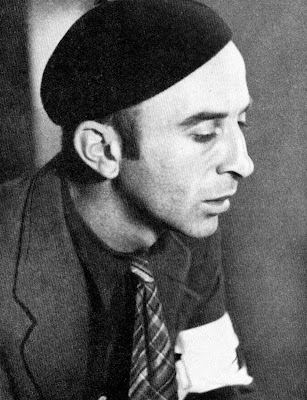A 're-post" from "The World in Faces" by Alexander Khimushin:
Today, I found myself in the enchanting remote town of Berd,
nestled in the mountains of Tavush Province of Armenia—a place I had never
heard of until yesterday. I'm fortunate to be a guest of an extraordinary
couple, Lesing (85) and Elmira (85) Agakaryan, who have welcomed me with open
arms. As we sip on a delightful cup of freshly brewed coffee, I can't help but
admire their vibrant jackets, knitted by Elmira in the 1970s using traditional
Armenian patterns—a craft she has cherished all her life.
Once upon a time, Elmira’s family hailed from Berd, where an
old family house stood abandoned for years after they moved to the capital,
Yerevan. Little did Elmira know that she would one day return to restore that
family treasure. Meanwhile, in Yerevan, Elmira's older brother, Wilhelm
Matevosyan, became a celebrated Armenian author and art critic. At that time,
Elmira was still a schoolgirl.
Lesing fondly reminisces, “We met in high school. I played
the tar—a traditional string instrument—in the school band, while Elmira
dazzled as a member of the dance troupe. She was breathtaking, and I fell in
love the moment I saw her. We've been together ever since.” Over the years,
Lesing earned a PhD in physiology and lectured at a university, while Elmira
pursued a career in economics. Although their professional paths didn’t lead
them into the art world, they were close friends with Wilhelm, who profoundly
influenced Lesing's artistic journey. “One day, Wilhelm brought me a sketchbook
and urged me to paint again. That rekindled my passion for art at the age of
50, and I’ve been painting for the last 35 years,” he shares. Elmira adds, “My
creative path for decades has been traditional embroidery and knitwear, but
sadly I had to stop last year due to eyesight issues.”
“After our dear brother and friend Wilhelm passed away, we
made a life-changing decision to leave our full-time jobs in Yerevan,” Elmira
explains. “We sold everything and returned to Berd, restoring my family home
and establishing a free art school for local children. For the past 25 years,
we've been living in Berd and running this school, nurturing many young
talents. Currently, we have eight students aged 11 to 16.”
I was genuinely amazed to discover such a well-equipped,
modern, and sunlit art school in this small and remote Armenian town. Thank
you, Lesing and Elmira, for your selflessness and dedication to empowering
local children!
We spent a wonderful day together. As I wrapped up my visit,
I couldn't help but ask one last question: After so many years together, what’s
the secret to your enduring partnership?
Lesing and Elmira replied, “True friendship. They say men
and women can't be friends, but we disagree. It's about two souls connecting.
She’s a human being, and he's a human being. We always support each
other—that’s what we call real friendship.”


























.png)
.png)
.png)
.png)
.png)
.png)

.png)
.png)




.png)
.png)
.png)
.png)









